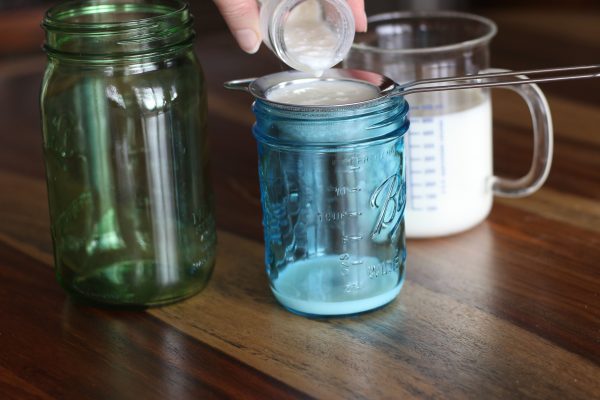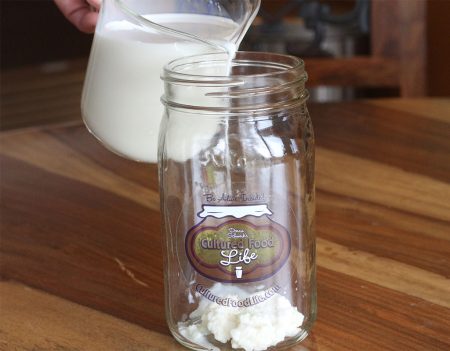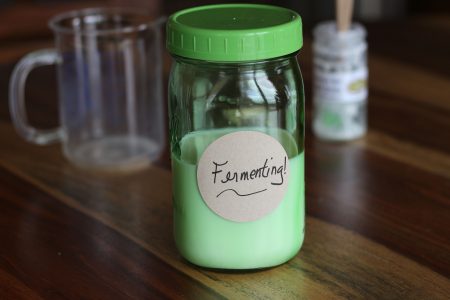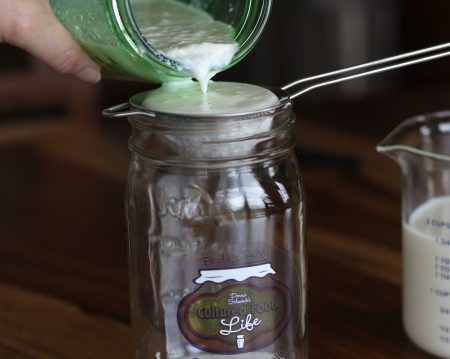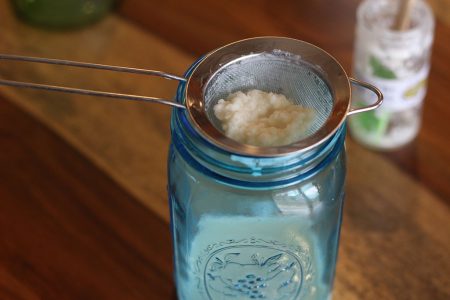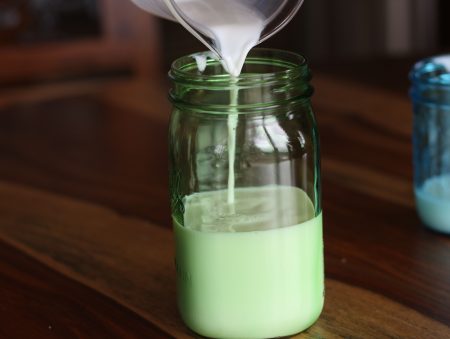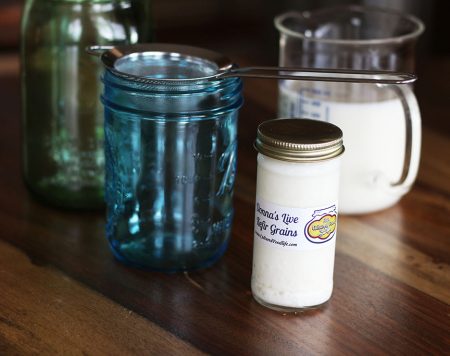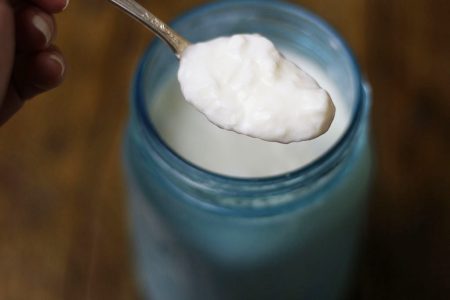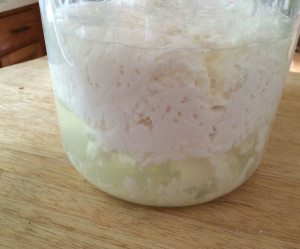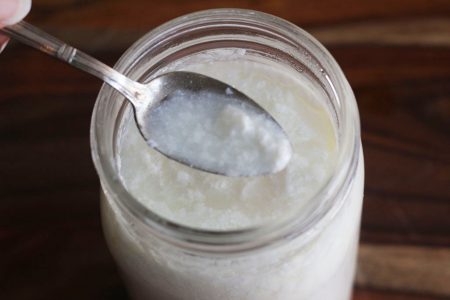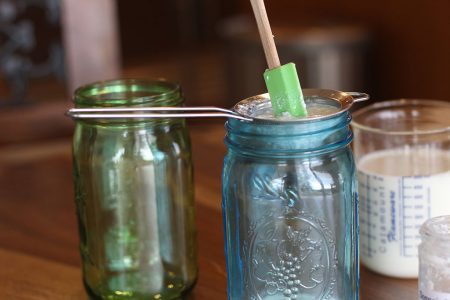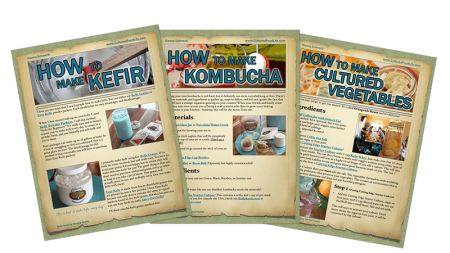
The Dog That Kefir Saved
kefir is wonderful for dogs
Christian the Dog that kefir saved

Dionne has a dog, Christian, that got very sick two years ago in February. He had bloody, explosive stools and vomiting. They took him to the vet and ran tests but couldn't find anything. They put him on three medications that sort of helped, but he had to have a strict diet of chicken and rice. If they deviated from this diet, the bloody diarrhea and vomiting would return. This went on for seven months. In September, Dionne came to my class and got kefir grains and started making kefir smoothies for her family. She thought since it was so good for her family that it might help Christian. She mixed some kefir in his food because she had run out of medication at that time. In three days of no medication and kefir every day, the bloody stools and stomach upset stopped. Now Christian has a cup of kefir a day and can eat anything. He is as happy as he can be. Many times when he sees Dionne with the blender making kefir smoothies, he follows her around begging for more. She told me of this story and how awful it had been when he was sick. She could not believe that in three days, after months of being sick, kefir fixed him. They call him, "the dog that kefir saved.
Health Benefits and Stories about Kefir
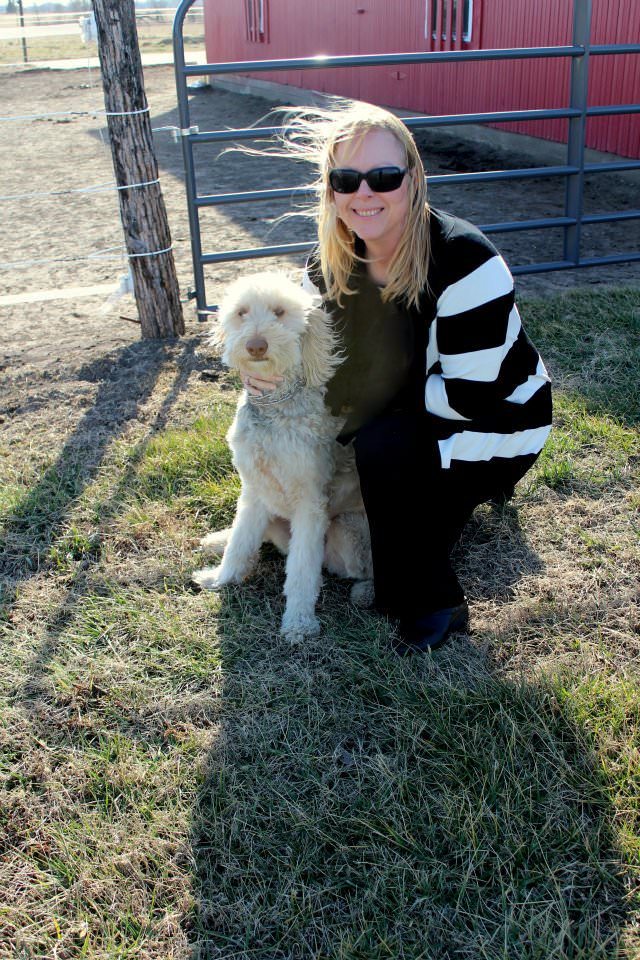
- I had a man who came to my classes who had been on constipation medication for many years. He got off these medications quickly after consuming kefir for a few weeks.
- I had another mom who had an infant with terrible ulcers that nothing seemed to help, but within a month of consuming kefir, the ulcers were gone.
- I had another woman who came to my class whose husband had a rare disease - everything he ate had to be pureed or he would get very sick. After a few weeks on kefir, he could eat solid food again with no problem.
Never underestimate how much the colon loves the bacteria in Kefir. It is these very bacteria that perform a myriad of functions every day.
The main functions of the colon are absorption of water and minerals, and the formation and elimination of feces. The colon contains nearly sixty varieties of microflora, or bacteria, to aid digestion, promote vital nutrient production, to maintain pH balance, and to prevent the growth of harmful bacteria.
These bacteria provide important functions such as the synthesis of folic acid and valuable nutrients from foods, including vitamins 'K' and portions of the 'B' complex. Bacillus coli and acidophillus comprise the majority of healthy bacteria in the colon along with many other contrasting types of bacteria in lesser numbers.
The process of digestion, from ingestion of food to defecation, normally takes between 12 to 24 hours, assuming that the colon is fully functional and non-toxic. Irregular or infrequent bowel movements can allow toxic residues, from the by-products of undigested foods, to remain in the colon.
Bottom line, your body needs these good bacteria to help them do their job. Give it to your kids, your dogs, and other animals in your house and watch what happens. Kefir saved me, too.
Kefir (Using Live Kefir Grains)
Watch The Video
Every ingredient with a link was selected by me to make it easier for you. I may receive a small affiliate commission if you buy something through my links. Thank you! ❤️
Instructions
Making Kefir
- Add fresh milk to the remaining kefir grains, then the whole process is simply repeated for the next batch. Your kefir grains will grow and multiply each week, so increase the milk or remove some of the grains. You can give your extra grains to friends or pets, or you can even blend them up in the blender with a smoothie and drink them. They are good for you!
- The kefir that went through the strainer (that came in the jar) can be placed in a glass jar to be consumed immediately. It can also be stored in the fridge. This will last many months in your refrigerator and is preserved by the presence of good bacteria, which keeps the milk safe. However, it will get more sour over time as it will slowly keep fermenting in your fridge. Every 24 hours when your kefir is done, you can add to the batch of the previously made kefir in your fridge or drink it.
Taking a Break from Kefir
- If you have to go on vacation, here is an article to help you. What to Do With Your Cultures While You’re on Vacation.
Kefir Changes
Kefir Seperating
- If your kefir separates into whey and curds, don’t worry. It’s just a little over fermented and is still good to drink. You'll need to add more milk or shorten the fermenting time or remove some of the grains. Check out this article for more help. Thick and Thin of Kefir
Creamy Kefir
- If your kefir separates into whey and curds, check out this post for tips on how to make it creamy again. How to make your kefir creamy again
- If you have more questions, check out our FAQ's about kefir page.
Notes
Are you on the list?
Sign up today and I'll send you my free Getting Started Guide!
Each week I'll send you updates, tips, recipes, and more! You might even be a winner of my weekly giveaway! (starter cultures, memberships, and more!)
Come be a part of my cultured food family!

